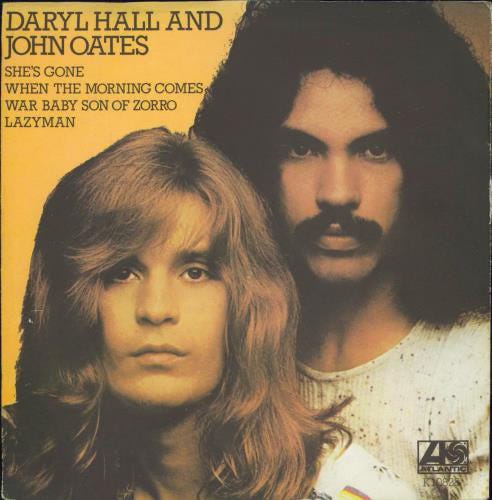EDITOR’S NOTE: This essay was originally published July 16, 2024.
Hall and Oates are a legendary songwriting team. They formed in 1970 and had their first big hit, Sara Smile, in 1976, rising to #4 on the Billboard Charts.
In 1976, based on the success of “Sara Smile” they re-released “She’s Gone” from their 1973 album “Abandoned Luncheonette” which Lou Rawls had covered in 1974 .
The Ur-Music Video
As MTV didn’t debut until 1981, it may be the that Hall and Oates’ 1973 video for “She’s Gone,” was the Ur-Music video, albeit one that essentially disappeared for 50 years.
There is no need for me to tell the story of how John Oates’ sister created a bizarre art film for “She’s Gone,” as Oates himself tells it to great effect.
“She’s Gone” is the Essence of the 1970s
The early 1970s was something of a Golden Age in American Music, as folk, rock, R&B, and Country, all shared the same space on the FM airwaves. Hall and Oates melded the sounds of pop and rock (Hall) with R&B forms (Oates) and created a singular sound.
“She’s Gone” begins with a sultry guitar, tinged with synthesizers. The verse is sung as a duet, an octave apart. The lyrics are a classic tale of lost love and follow R&B conventions until the synthesizer solo leads into the second instrumental break (3:07-3:41).
Although it may sound dated to us in 2024, the Mini Moog synthesizer sound was au courant in 1973.
At (4:30) the song changes key (modulates) from E Major to G Major using chromatic (1/2 step), upward chord progressions.
“She’s Gone.” A classic from a legendary songwriting duo.





A please
Wow. How’s that for timing? I posted a Note yesterday about my life and this song, then you like my Note, I check out your profile, and this post is at the top of the list. Crazy! It must’ve been in the air (tonight).
Thanks for liking my Note!